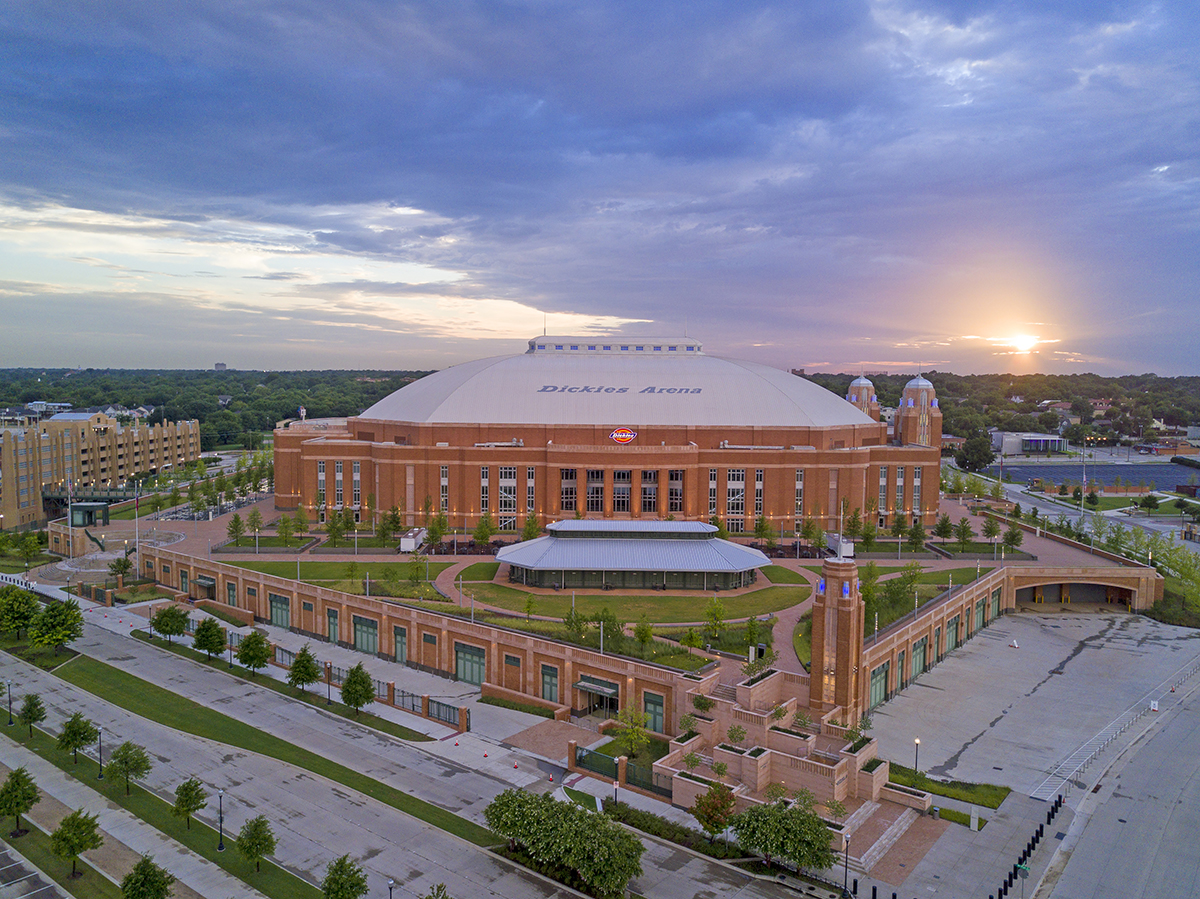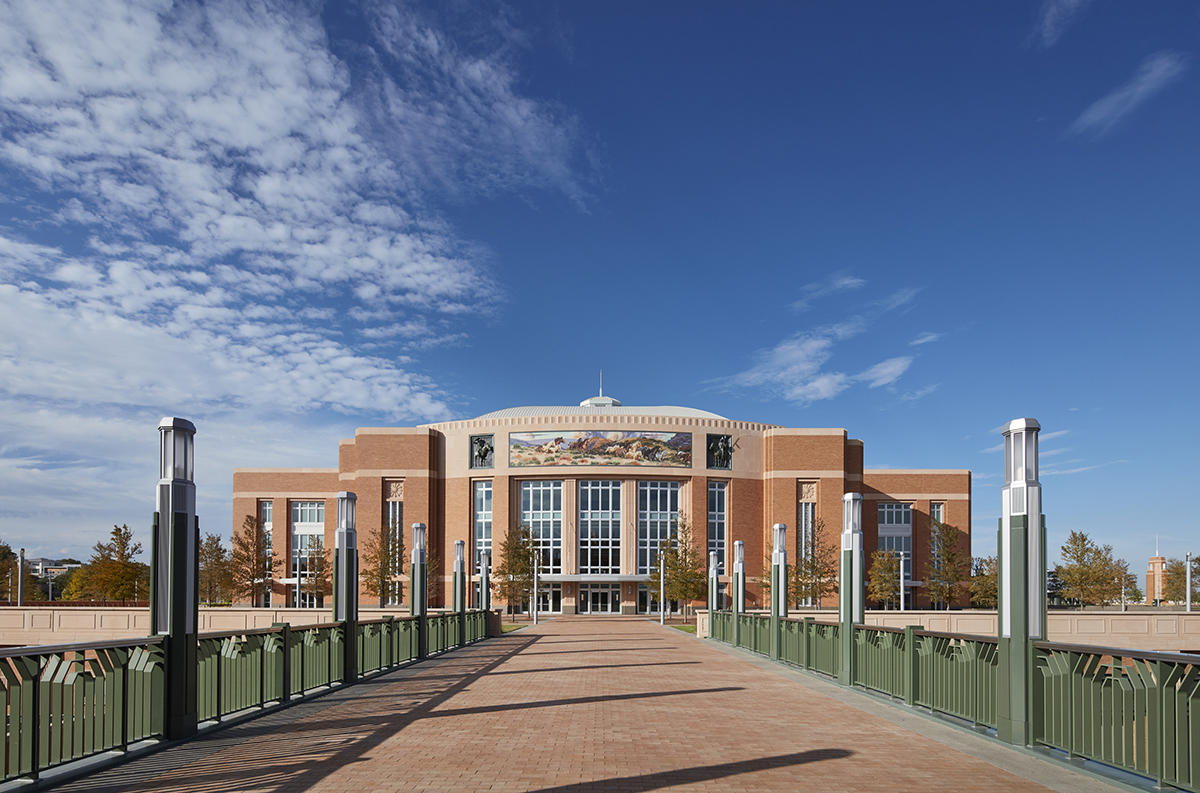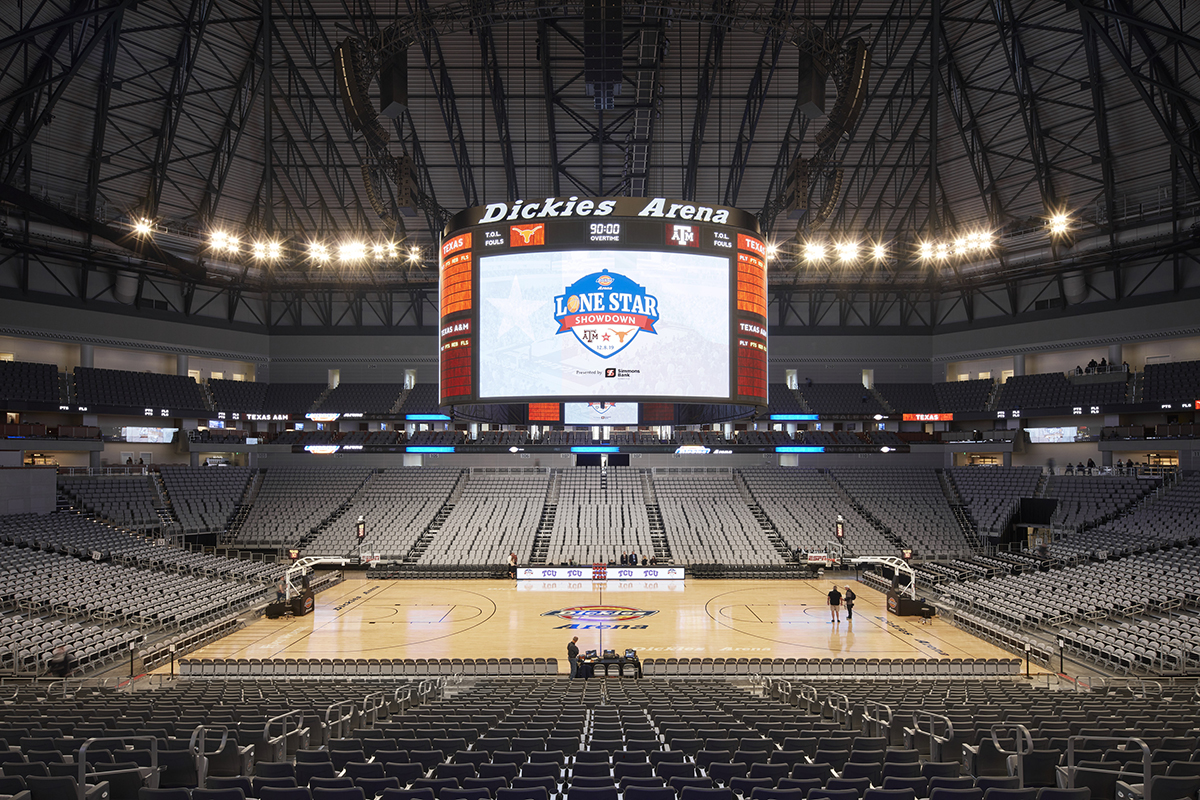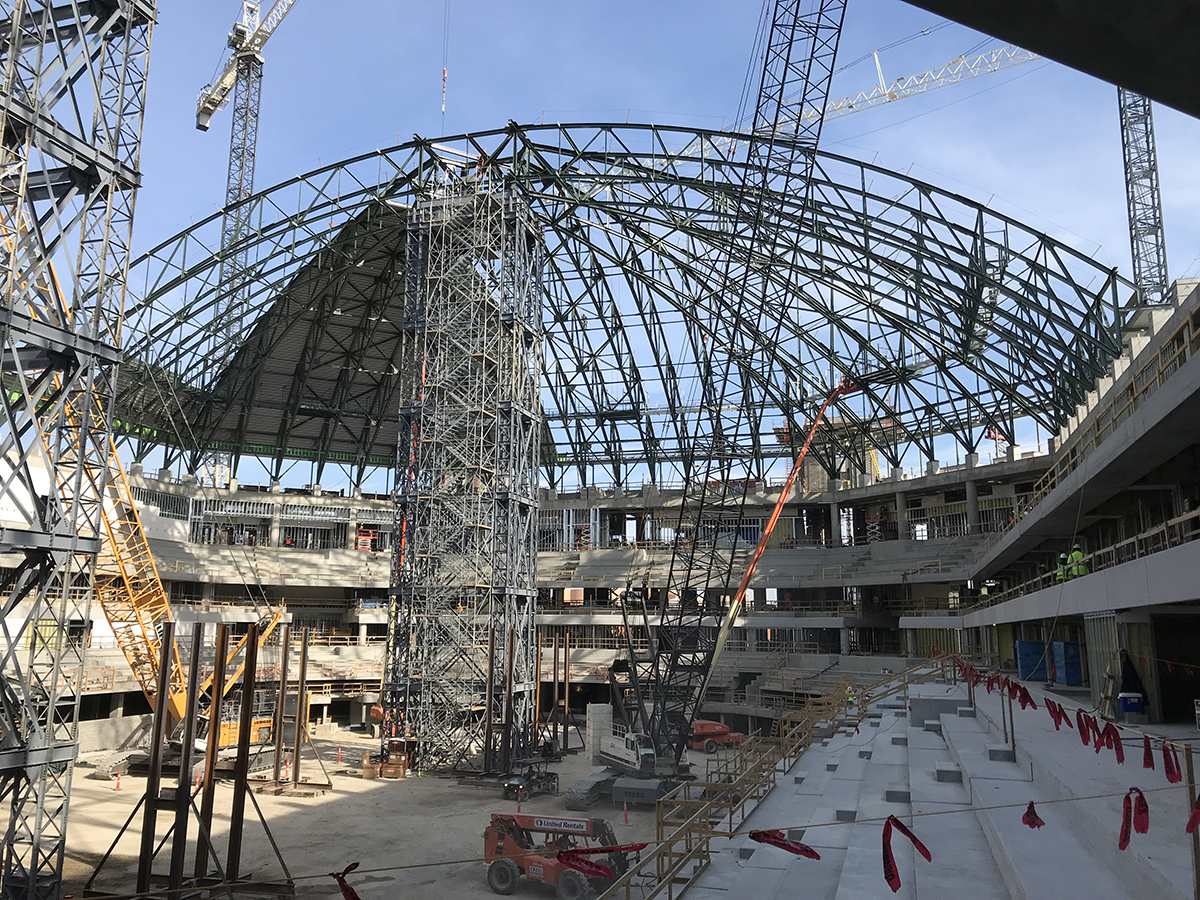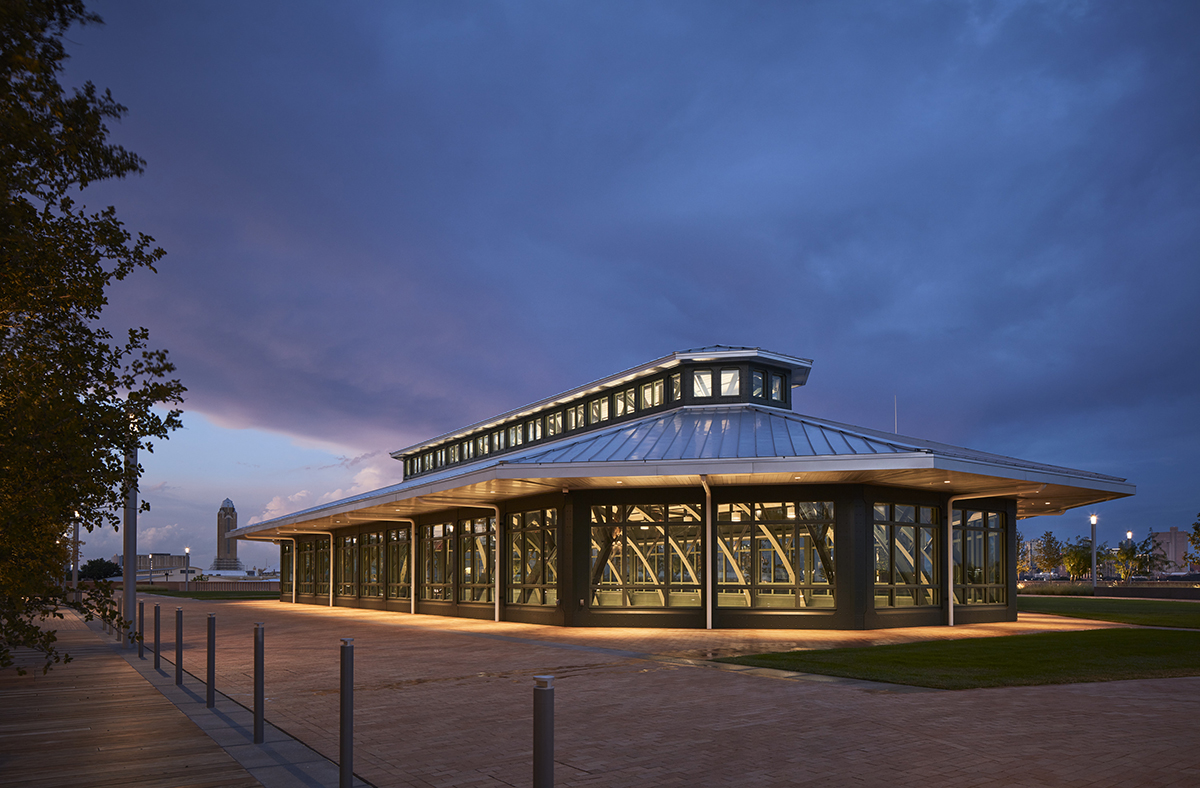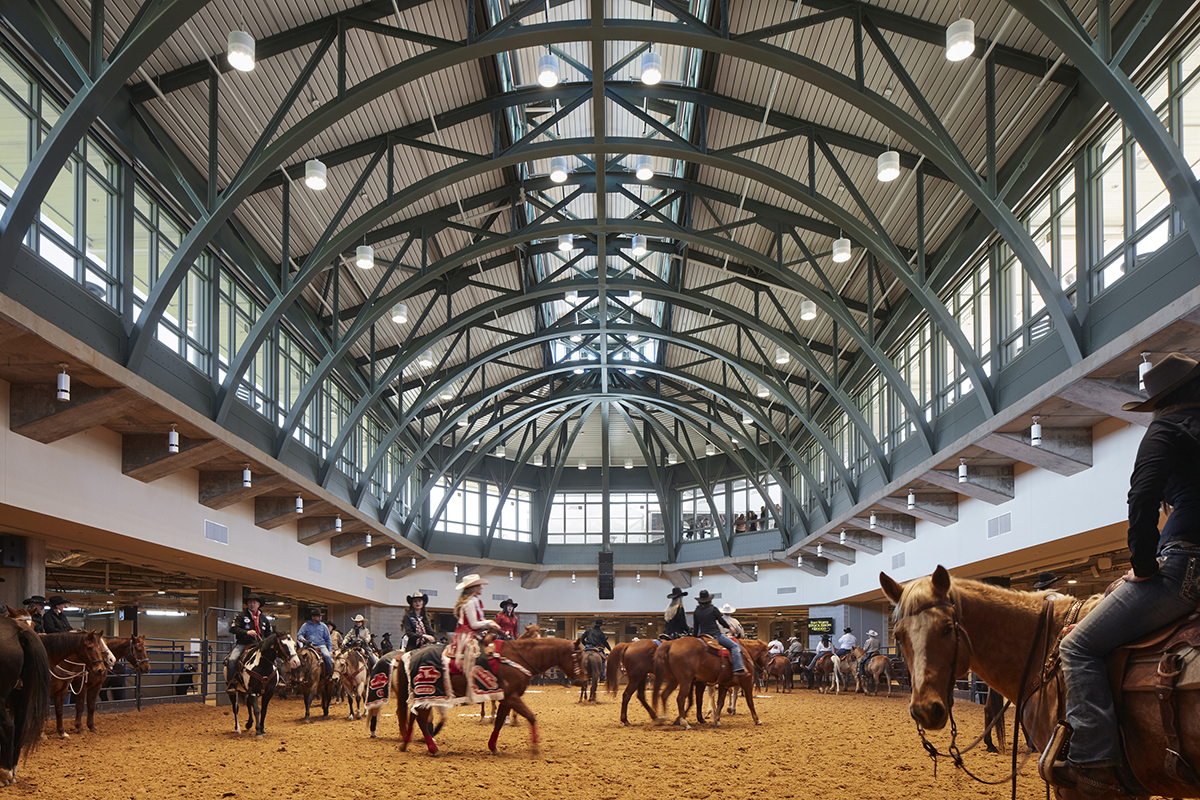AISC
Dickies Arena
National Award - Greater than $200 Million
This is a collection of buildings with impressive logistics and impressive resolution. The stated goals were clearly and gracefully achieved. The steel structure feels like an integral and expressive part of the design, both in the exposed, rugged roof structures, and in the more refined tactile structures like the stairs and railings. This is a great example of how all the pieces can come together to create a whole that's more valuable than the individual parts. —2021 IDEAS² Judge Anders Lasater, AIA, CEO and Principal Architect, Anders Lasater Architects, Los Angeles
For more than 80 years, Will Rogers Coliseum served as the host of the Fort Worth Stock Show and Rodeo and also as a key architectural landmark for Fort Worth. Designed in the Southwest Art Deco style, the 1930s-era arena features an exposed structural steel barrel-vaulted roof crowned with a cupola. The coliseum’s efficient and purposeful form created an intimate atmosphere for an immersive rodeo experience.
It also served as the inspiration for its replacement, the new Dickies Arena. However, it also represented the challenges of incorporating the deep history and intimacy of the Coliseum environment at a larger scale while creating the flexibility to be able to host other non-rodeo events. The architectural design team embraced this challenge and developed a roof shape that would reflect the original coliseum.
The new 14,000-seat, 715,000-sq.-ft multipurpose Dickies Arena features unmatched amenities and accommodations to host not only the Stock Show and Rodeo but also hockey games, concerts, conventions, and private events. A new icon for Fort Worth, the arena offers the community three spectacular entrances: a grand north stair connecting to the cultural district and the revered Will Rogers campus, a monumental stair linking to downtown Ft. Worth, and an ornate pedestrian bridge extending to the new parking garage. These stunning entryways draw patrons into a meticulously landscaped plaza. Like the arena, this three-acre space was designed in a Southwest Art Deco style to pay homage to the city’s architecture and the region’s cowboy culture.
This exceptional facility had three architects working collaboratively to create a cohesive design, and the structural team partnered with them to bring the design to life. Design architect David M. Schwarz (DMS) focused on the detailing and aesthetics of every space, sports architect and architect of record HKS prioritized the function of the arena and how it appealed to fans, including the sightlines and acoustics, and Hahnfeld Hoffer and Stanford, the architect for the arena support building, focused on the functionality and flexibility of that space. The Walter P Moore structural team worked closely with the architects to create innovative solutions for each space and function of the complex.
Even in a market dominated by concrete construction, some structures present themselves with challenges that can only be solved with steel, and Dickies Arena is a perfect example. The dominant structural form of the arena is the 420-ft by 280-ft clear-span roof that arches over the event space. Structural steel trusses with a shallow depth of 14 ft and generous spacing of 15 ft make the roof seem light and airy, as only steel can do. In addition to steel being the logical and appropriate choice for this element of the structure, the project’s design architect envisioned exposed structural steel in various areas of the structure to complement the 1930s cowboy culture feel of the facility.
The exposed structural steel long-span roof was key to creating this feel visually and acoustically. While the barrel-shaped, double-arched roof form was chosen to pay homage to the original Coliseum roof, a tighter roof truss spacing was desired architecturally to create a regular rhythm and pace for the space. Most modern arenas use larger and deeper trusses spaced further apart to leverage the deck span capabilities and much lower piece counts. While Dickies Arena’s tighter truss spacing is unique in modern arenas, the inherent structural efficiency of arched roof form allowed for lighter and more shallow truss elements to be used.
WT top and bottom chords and double-angle web members allowed the exposed roof structure to express its connections cleanly and elegantly, and an architectural review of the structural connection details was integrated into the design process to ensure that the design intent was met. The truss spacing created an expansive and highly flexible rigging environment with over 800 potential attachment areas and without a visually imposing rigging grid.
Exposed structural steel was also used extensively in the pavilion arena and the prominent pedestrian bridge. The bridge brings the architectural and structural beauty and practicality of steel outdoors for both event-day patrons and every-day passersby to experience, and also serves as a key entrance to the facility, welcoming visitors to the expansive elevated upper plaza on which the arena sits.
Not all structural steel on the project was exposed. Four geometrically-expressed grand stairs (two elliptical and two octagonal) cantilever off the main structure with steel framing and offer the impression that the spiraling stairs are dramatically floating above the grand lobby below. As with other areas of the facility, steel allowed strict adherence to architectural geometric constraints that could not have been accomplished with other materials.
Steel fabricator and detailer: W&W | AFCO Steel, Oklahoma City *AISC Member* *AISC Certified Fabricator*
Steel erector: Bosworth Steel Erectors, Dallas *AISC Member* *AISC Certified Erector*
Bender-roller: Max Weiss, Milwaukee *AISC Member*
Structural engineer: Walter P Moore, Dallas
Architects:
HKS, Inc., Dallas
David M. Schwarz, Washington
Hahnfeld Hoffer and Stanford, Fort Worth, Texas
General contractors:
Beck Group, Fort Worth, Texas
Austin Commercial, Dallas
Owner: City of Fort Worth, Fort Worth, Texas
Operator: Trail Drive Management Corp., Fort Worth, Texas
- Project Category: Year 2021
- Location: Fort Worth, TX
- Award Category: National Award - Greater than $75 million
- Year Completed: 2019
- Submitting Firm: Walter P Moore
- Photo Credit: 1 - Arcpoint Studios; 2, 3, 5, 6 - Steve Hall; 4 - Guy Decker

